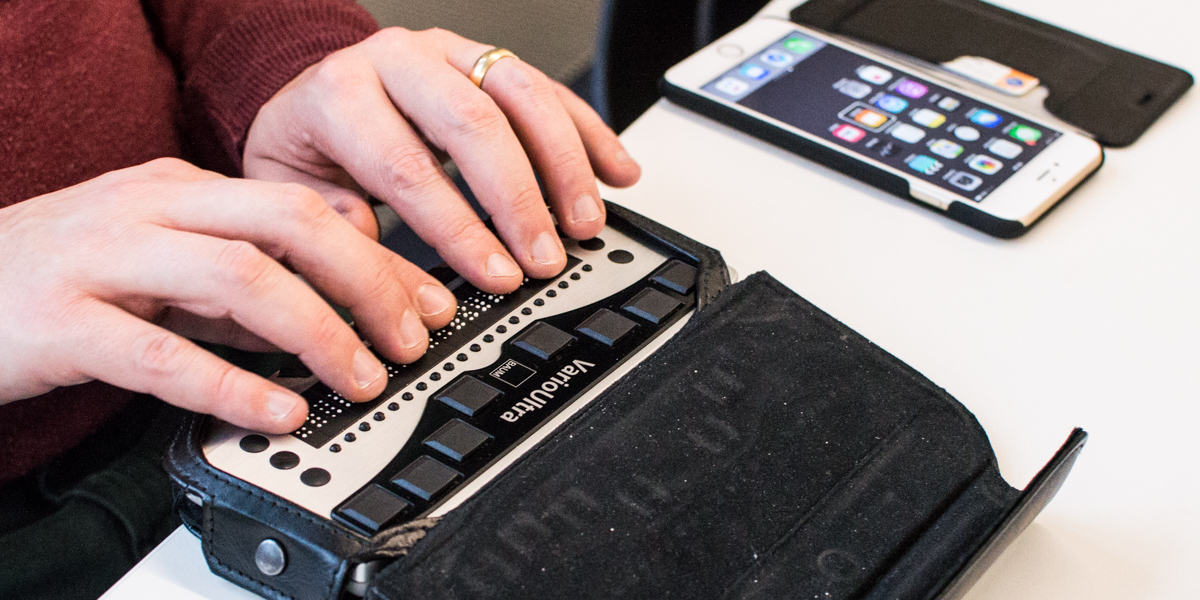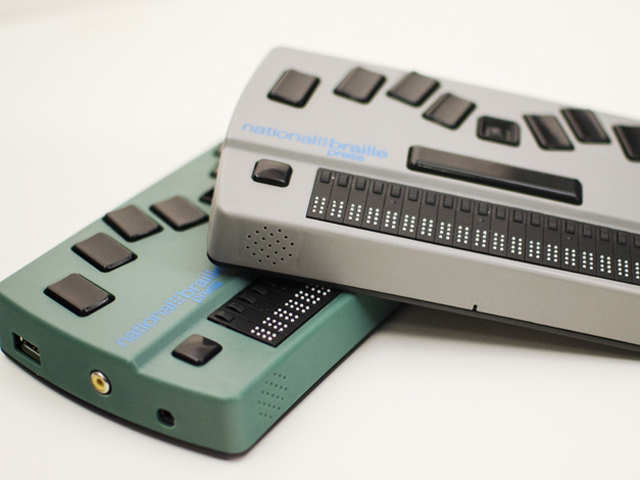Lightweight Technology for Low Vision: A Game-Changer in Accessibility
Lightweight Technology for Low Vision: A Game-Changer in Accessibility
Blog Article
An Overview to Life-altering Assistive Technology for the Blind and Visually Damaged
The innovation of assistive modern technology has introduced a transformative period for people that are blind or aesthetically impaired, offering tools that boost freedom and improve daily experiences. Innovations such as clever navigating gadgets and AI-driven applications are redefining how individuals interact with their environments, while obtainable reading remedies and smart home innovations assure to further boost the lifestyle. As these innovations remain to evolve, one should consider not just their functionalities but also their effect on promoting freedom and inclusivity. What does this mean for the future of ease of access?
Smart Navigating Tools
Smart navigation tools are transforming the method people who are blind or visually damaged connect with their environment. These innovative technologies, which incorporate general practitioners, audio feedback, and haptic signals, provide users with essential details regarding their surroundings, improving their freedom and flexibility.
One famous instance is making use of smart walking canes furnished with sensors that find barriers and offer real-time comments via vibrations or audio hints. These tools enable customers to browse intricate atmospheres, such as hectic roads or crowded public rooms, with boosted confidence. Additionally, wearable tools, such as smart glasses, are being created to aid in identifying faces, checking out message, and determining things, further increasing the individual's spatial recognition.
In addition, clever navigating tools are significantly incorporating expert system to assess data and adapt to individuals' preferences. This customized technique not just improves navigating performance yet likewise cultivates a sense of empowerment among individuals. As innovation remains to breakthrough, the possibility for smart navigating devices to develop a more accessible and comprehensive globe for individuals that are blind or aesthetically damaged remains promising, ultimately improving their everyday experiences and communications.
Cutting-edge Mobile Applications
Mobile applications are becoming powerful devices for assisting people who are blind or aesthetically impaired, supplying a variety of performances that boost daily living. These applications harness progressed innovation to assist in daily tasks, enhance accessibility, and promote independence.
One group of cutting-edge mobile applications concentrates on visual acknowledgment. Applications like Be My Eyes link customers with sighted volunteers using video phone calls, enabling real-time aid for jobs such as reviewing labels or navigating strange atmospheres. Applications like Seeing AI make use of fabricated knowledge to explain surroundings, read message, and determine objects, providing individuals with vital info at their fingertips.
An additional significant area is navigating and orientation. Apps such as Aira and Close-by Explorer offer audio assistance, assisting individuals browse urban areas easily. They offer personalized assistance, permitting an extra certain exploration of the setting.
Additionally, health and wellness and health applications deal with particular requirements, such as medicine management and health and fitness monitoring. These applications aim to promote an all natural approach to wellness, ensuring that customers can maintain their wellness independently.
Wearable Assistive Gadgets
Wearable assistive devices stand for a significant development in modern technology created to sustain people that are blind or visually damaged. These devices boost movement and self-reliance by giving real-time feedback concerning the surrounding environment. Amongst one of the most significant wearable technologies are clever glasses outfitted with sensors and cams, which can recognize barriers and relay crucial official site information through audio signs.

An additional cutting-edge option consists of wrist-worn tools that utilize ultrasonic waves to spot obstacles and give navigational support. These tools typically feature adjustable setups, allowing users to customize the signals to their specific requirements.
The assimilation of expert system in wearable assistive technology is also noteworthy, as it constantly improves the accuracy and responsiveness of these gadgets. Overall, wearable assistive devices are changing the lives of the visually damaged and blind, fostering higher autonomy and boosting lifestyle through cutting-edge remedies.
Accessible Checking Out Solutions
Available analysis services play a vital function in allowing people that are blind or visually damaged to engage with text across numerous layouts. These options include a variety of tools and innovations designed to improve analysis experiences, from standard print materials to electronic material.
One prominent solution is Optical Personality Acknowledgment (OPTICAL CHARACTER RECOGNITION) innovation, which transforms published text right into digital layout, permitting individuals to pay attention to or check out the web content making use of screen viewers. In addition, specialized e-readers equipped with text-to-speech capacities supply personalized analysis experiences, making it possible for customers to readjust font sizes and history colors for improved presence.
Another effective technique is braille screens, which offer tactile comments by converting digital text into braille. This enables people to review touch, fostering greater independence and access to literature. Furthermore, mobile applications created for reviewing scanned records or books can encourage users with immediate accessibility to a substantial collection of materials.

Smart Home Technologies
Smart home technologies have actually reinvented the way people that are aesthetically damaged or blind connect with their living environments, boosting both freedom and safety. These innovative options take advantage of automation and connectivity to develop an obtainable space tailored to the needs of individuals.
Smart audio speakers and voice-activated assistants provide hands-free control over numerous tools, allowing individuals to readjust safety, lights, and temperature actions through straightforward voice commands. This capability lessens dependence on sighted assistance and promotes a sense of freedom. In addition, wise lights systems can be customized to supply auditory feedback or responsive signs, allowing people to browse their homes better.
Furthermore, security systems outfitted with smart video cameras and sensing units can send out real-time signals to users, enhancing individual safety visit here without requiring aesthetic confirmation. Automated door locks provide assurance, enabling users to protect their homes easily.
Incorporating smart Continued home technologies not just boosts daily living yet likewise motivates social interaction via linked devices - Smart glasses for the visually impaired. With continuous innovations in assistive modern technology, the future shows up encouraging, as more solutions will emerge to additional encourage people who are blind or visually damaged, guaranteeing an extra inclusive and independent lifestyle
Conclusion
In verdict, the advancements in assistive modern technology for the aesthetically damaged and blind stand for a significant leap toward improving freedom and top quality of life. Smart navigating devices, innovative mobile applications, wearable tools, obtainable reading solutions, and wise home innovations jointly foster an inclusive environment. This integration of innovation not just enhances flexibility and daily living yet likewise encourages people to involve totally with their surroundings, promoting higher freedom and engagement in culture.
Innovations such as smart navigation gadgets and AI-driven applications are redefining how individuals communicate with their environments, while obtainable reading options and clever home technologies assure to additional elevate the top quality of life. As modern technology continues to advancement, the potential for wise navigating tools to develop a more comprehensive and obtainable world for individuals that are blind or aesthetically damaged stays appealing, ultimately improving their day-to-day experiences and interactions.
Wearable assistive tools represent a significant development in innovation made to sustain people who are aesthetically impaired or blind. Amongst the most notable wearable modern technologies are wise glasses geared up with sensors and video cameras, which can determine barriers and relay critical details with sound signs.
Smart navigating devices, innovative mobile applications, wearable gadgets, easily accessible reading solutions, and wise home technologies collectively promote an inclusive environment.
Report this page